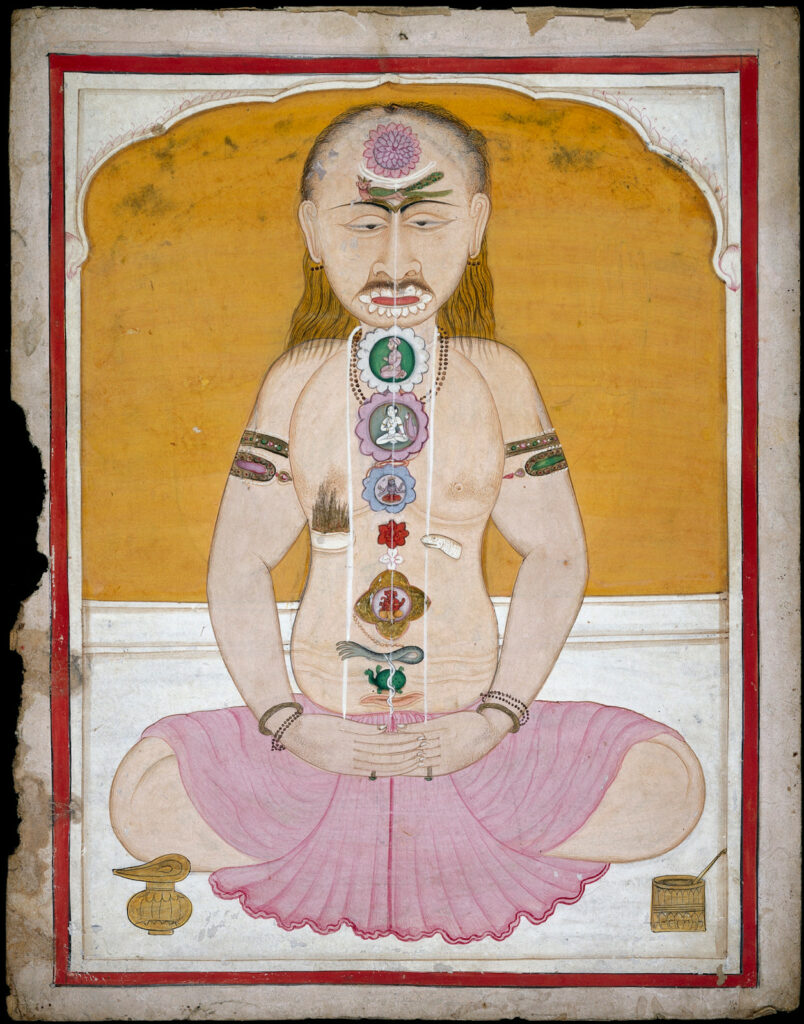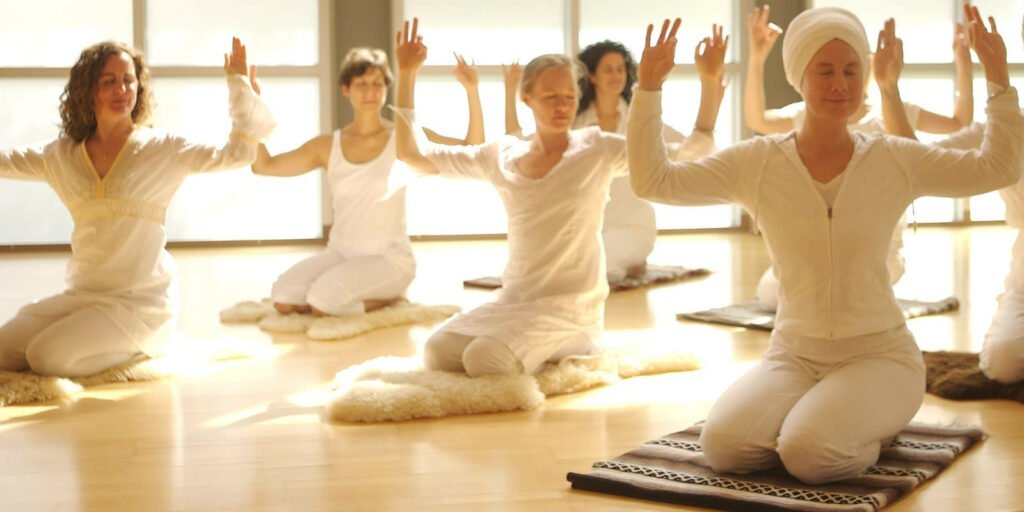Listen to this article:
Key Takeaway
Kundalini awakening is a transformative rise of spiritual energy through chakras, achievable with practices like Kundalini yoga. Preparation is key to navigate potential side effects and enhance the positive impact on spiritual growth.
Kundalini awakening has recently become a somewhat buzzword in the spiritual world, but kundalini energy is not something new.
You may have heard that a kundalini awakening is a powerful personal transformation or that it leads to spiritual enlightenment. But if you’re interested in trying this spiritual practice, you should first understand what it entails.
In this guide, we’ll explain what kundalini energy is, what it means to awaken Kundalini, and the process of doing it.
Contents
- 1 What is Kundalini Energy?
- 2 What Does it Mean to Have a Kundalini Awakening?
- 3 What Happens After a Kundalini Awakening?
- 4 Benefits of Awakening Kundalini Energy
- 5 Signs You Are Going Through a Kundalini Awakening
- 6 Is a Kundalini Awakening Dangerous?
- 7 How to Awaken Kundalini Energy
- 8 Preparing for a Kundalini Awakening
- 9 The Importance of Diet and Nutrition in Kundalini Awakening
- 10 Coping with Kundalini Side Effects
- 11 Final Thoughts on Kundalini Awakening
What is Kundalini Energy?

Kundalini is a form of divine feminine energy (also known as Shakti). In tantra teachings, it is defined as energy that lies within the body, usually at the base of the spine. The Sanskrit word Kundalini has several translations, such as “circular,” “coiled,” and “snake.”
Kundalini teachings first appeared in ancient Hindu text, The Upanishads, written between 800 to 500 B.C. Shakti and Tantra schools of Hinduism refer to Kundalini energy as a serpent power and is often represented as a coiled snake in illustrations. Moreover, in Śhaiva Tantra, it is believed to be a force associated with the formless aspect of the Goddess.
It is said that kundalini energy lies dormant in the root chakra (Muladhara chakra), waiting to move its way up the other six chakras (energy centers). However, teachings state that the energy can only rise if all chakras are open and transparent. Thus, for many people, it is never awakened.
Even so, it is believed that Kundalini is a potent life-force energy that, when awakened, can result in an intense spiritual awakening or liberation. This is why more and more spiritual seekers, yogis, and new-age practitioners are starting to follow the ancient practice of kundalini yoga.
What Does it Mean to Have a Kundalini Awakening?
An awakening is when the dormant kundalini energy rises from the base of the spine all the way up to the seventh chakra, Sahasrara. Many people who have experienced a kundalini awakening describe it as a remarkably powerful spiritual experience.
It may feel like a sudden surge of energy moving through your body, with or without uncontrollable physical movement like shaking, jerking, or spasms. Moreover, some people report a feeling of sensory overload as it is happening. On a mental and spiritual level, you may notice enhanced awareness and the ability to move past your ego.
While a kundalini awakening is a psychophysical experience, it differs from a psychotic break. This is because a kundalini awakening may appear spontaneously or out of the blue. However, it results from prolonged engagement in Kundalini yoga meditation, breathwork, or other tantric practices.
Unlike a psychotic break, a kundalini awakening is not something anyone can have at any time. Instead, it results from being dedicated to your spiritual journey and practice. What’s more, with psychosis, the sufferer usually believes in an altered reality and wants to stay there. However, someone with a kundalini experience will retain a clear sense of reality and their normal state of mind.
That being said, some people try to “fast track” their way to experiencing awakened Kundalini with entheogenic drugs, such as LSD. However, this method is not recommended as it can be dangerous and distressing (more on that later).
What’s the Difference Between Spiritual Awakening and Kundalini Awakening?
Kundalini awakenings are often called spiritual awakenings, but they are technically not the same thing.
Spiritual awakenings are internal psychological and emotional experiences. They can happen through spiritual practices such as yoga or meditation, or they can be triggered by traumatic or life-changing events. For example, many people claim to experience a spiritual awakening after they become terminally sick or they lose all their money.
You will likely question your life, values, and beliefs during a spiritual awakening. Moreover, you may detach from your ego and wake up from the identification of the self. It is a discard of the personal identity and understanding of the universal oneness.
A kundalini awakening, however, is an energetic process of life force moving through the chakras. Therefore, it cannot occur from a life event but through long-term spiritual practice, resulting in a shift in consciousness.
A kundalini awakening also gives insights into the true nature of reality but usually on a more profound and much more intense level. The experience may be accompanied by some unusual and uncomfortable symptoms. Still, generally, it results in intense waves of bliss and bodily pleasure.
Lastly, as Kundalini is about reaching enlightenment, far more people have spiritual awakenings than kundalini awakenings. Thus, some people may mistake a kundalini awakening for a spiritual experience.
What Happens After a Kundalini Awakening?
It’s common to feel intense emotions after the Kundalini awakening process. Still, as it is a personal experience, the feelings can vary. For example, some people feel extreme joy and peace, while others experience fear, confusion, or sadness.
Kundalini awakenings can bring up past experiences and trauma. This is because the process frees up energetic blockages and releases deeply held tension in your neuro-physical being. This is purely part of the healing process, though. In fact, a South African study found Kundalini Yoga effective in post-traumatic growth.
Most people who go through a kundalini awakening experience changes and shifts over several years. Once the kundalini energy awakens, it continues flowing through your system, changing your thoughts and emotions as your mind opens up to your new reality and higher consciousness.
As this happens, it’s not unusual to see changes in your relationships. You’ll probably find some become stronger while others break down. In addition, many people also find that when Kundalini awakens, they discover and connect to their life purpose.
Although what people experience differs, a kundalini awakening is permanent. Thus, the experience significantly changes a person’s state of mind and life.
Benefits of Awakening Kundalini Energy

As we’ve discussed, the activation of Kundalini Shakti can have powerful effects on us human beings. The process may feel intense, but it certainly has many life-changing benefits, such as:
- A calm, clearer mind free from constant and repetitive thoughts
- Deep feelings of bliss, gratitude, and joy
- More empathy and compassion towards others and yourself
- Increased creativity and inspiration
- Self-realization and a deeper connection to your life’s purpose
- Enhanced psychic abilities and heightened senses
Although there is not much scientific research on kundalini awakenings, there have been some studies on the effect of kundalini yoga. For example, a 2018 study published in the International Journal of Yoga Therapy found the practice of kundalini yoga to be effective at reducing symptoms of generalized anxiety disorder.
Furthermore, a 2017 study measured the effects of kundalini yoga on stress and found that the practice can lower elevated levels of cortisol (the primary stress hormone).
Signs You Are Going Through a Kundalini Awakening
We already touched on the differences between a kundalini awakening and a spiritual revelation or psychotic break. Still, some key signs can help you determine if you are experiencing activation of the divine feminine energy.
Moreover, some signs can be scary and unpleasant, so it’s best to be prepared for when your Kundalini awakens. So if you’re seeking to experience Kundalini, here’s what to look out for.
Pleasant Symptoms
- Intense waves of bliss and joy that can feel similar to an orgasm
- A new sense of oneness with the universe
- Sudden insight or flashes of new wisdom
- A surge in creativity
- A feeling of attachment from the ego and material realm
- More synchronicities in your life
- Feelings of love and compassion for people you previously had tensions with
Unpleasant Symptoms
- Uncontrollable shaking, jerking, or spasms – apparently, this happens when the chakras are not fully clear. The blockages make it difficult for the energy to flow freely up the spine.
- Increased sensitivity to light and sound or a total sensory overload
- Hearing unusual sounds within your body like buzzing or musical instruments
Is a Kundalini Awakening Dangerous?
For most people, an awakening is a positive experience they are prepared for as they have been practicing kundalini yoga and other activation techniques. So they know what to expect and are physically, mentally, and spiritually ready for it.
However, Kundalini awakenings can be unpleasant and even dangerous if you attempt them without guidance. For example, suppose Kundalini prematurely awakens in someone unprepared and not ready for it. In that case, it can result in very uncomfortable symptoms, possibly causing immense havoc to that person’s state of mind. This is why following and practicing spiritual disciplines like Kundalini yoga is essential before trying to awaken the energy.
Negative intense experiences typically occur when someone uses a drug such as LCD to quickly awaken Kundalini. In these cases, the person has not done the necessary spiritual prep work to prepare themselves. As a result, it feels more like a bad drug trip than a positive and life-changing inner transformation.
What is Kundalini Syndrome?
Kundalini syndrome is a term given to people whose kundalini experiences involve negative symptoms similar to a mental illness or painful physical symptoms. This usually occurs when the person is not ready for the awakening. Thus, the energy gets blocked in the lower chakras and cannot rise fully.
Kundalini syndrome can be sudden and dramatic or start slowly, gradually increasing in intensity over time.
Common physical signs of kundalini syndrome are:
- Muscle cramps or spasms
- Feelings of electricity or lightning bolts inside the body
- Itchy or prickly sensations on the skin
- Headaches or migraines
- Changes in body temperature such as intense feelings of hot and cold, particularly along the spine or in the chakra energy centers
- Increased heart rate or pains in the chest
- Digestive issues, like diarrhea or constipation
- Pain or tension in the body, commonly the back or neck
Common psychological signs of kundalini syndrome are:
- Depression and negative emotions
- Hallucinations
- Spontaneous vocalizations such as uncontrollable laughing or crying
- Mood swings or emotional outbursts
- Disconnection from reality, in severe cases
- Insomnia
- Decreased appetite
- Extremes in energy levels – hyperactivity or fatigue
How to Awaken Kundalini Energy
You should seek a spiritual teacher or guru to avoid experiencing kundalini syndrome and reduce the likelihood of unpleasant symptoms. This should be someone who understands this spiritual energy and preferably has experienced their own kundalini awakening.
Once you have someone to guide you down this spiritual path, you should practice the following things regularly.
Kundalini yoga
The type of yoga found in most western yoga classes derives from Hatha yoga, a traditional practice that focuses on the physical aspect of yoga known as asana (the poses). However, some other styles of yoga focus on different parts of the practice.
Kundalini yoga is a form of Tantra yoga. It combines deep breathing, kriyas (cleansing techniques), mudras (sacred hand movements), mantras (words or phrases), and physical exercises (asanas). Thus, it is very different from the vinyasa yoga class you may be familiar with.
A kundalini yoga class typically involves various breathing techniques, many of which are performed with dynamic arm movements. The session will also feature meditation, Sanskrit chanting, and yoga postures.
Most kundalini yoga asanas target the navel and spine and apply pressure on specific body points and meridians. Breathing techniques involve the application of the 3 Bandhas ( yogic locks), which are believed to direct and control the flow of Kundalini energy from the lower chakras to the higher energy centers.
One common pranayama taught in kundalini yoga is alternate nostril breathing (Nadi Shodhana). It involves breathing in through one nostril and breathing out through the other, then reversing the technique. The method helps to cleanse the subtle channels and pathways known as the Nadis, which can help awaken the divine energy.
It is believed that kundalini yoga practice can help activate and awaken the spiritual energy at the base of the spine. In particular, it is stimulated during yogic breathing when prana and Apana merge at the 3rd chakra (the Manipura).
Kundalini yoga is a crucial method to follow when trying to awaken Kundalini. This is because the kriyas and meditations are designed to increase body awareness and facilitate a careful purification of the entire system. This prepares the body, mind, and nervous system to handle the intense energy of rising Kundalini.
Sivananda Saraswati and Yogi Bhajan are two of the most influential teachers responsible for bringing kundalini yoga to the western world. Today you can find kundalini classes in many yoga studios. In addition, there are workshops and retreats worldwide that can teach you on a deeper level how Kundalini works.

Meditation
Cultivating a daily meditation practice is essential when preparing for an awakening. Kundalini meditations involve chakra visualizations and mantra chanting. When working with kundalini energy in meditation, you should focus on the third eye chakra (the space between the eyebrows).
Mantras help you focus during meditation and are crucial to kundalini meditation. Unlike other forms of yoga and meditation, Kundalini typically involves chanting in Gurmukhi, a sacred Indian language, rather than Sanskrit.
Mudras are another tool you can use in daily meditation, such as the widely familiar Gyan mudra. Holding hand gestures while meditating can help you focus and help to direct energy flow along specific pathways like the central channel.

Energy healing work
While Kundalini yoga and meditation may focus on the upper chakras to draw energy up to the crown chakra, it is equally, if not more important, to work on the lower chakras. The three lower chakras (root, sacral, and solar plexus) are the most earthy energy centers. They are responsible for keeping us grounded in the physical realm.
Suppose the energy in the lower chakras is not strong and free-flowing. In that case, we can experience mental disturbances during a kundalini awakening, such as feeling confused or detached from reality. So by doing energy healing work on the lower chakras, through practices like Reiki or crystal healing, you’ll remove any energy blocks present.
Furthermore, energy blocks are common in the middle chakras, the heart and throat chakras, so you should also do some energy healing work there.
For example, suppose you are unconsciously holding onto past hurt or resentment, such as not letting go of a past relationship or family conflict. In that case, the heart chakra will likely be blocked. Or, if you have experienced being silenced, ignored, or made to feel like your voice is unimportant, there may be life force stagnation in the throat chakra.
Shaking and dancing
One way to drive energy through the body is to move the physical body dynamically, such as with uncontrolled shaking or dancing.
Spiritual guru Osho created a dynamic Kundalini meditation with four stages: shaking, dancing, sitting in stillness, and total relaxation lying down. When you become fully immersed in the shaking and dancing, it is said to “melt” any energy repression and blockages, thus, improving the energy flow through the central channel.

Tantric Intimacy
According to tantric teachings, the energy created through intimate energy is potent and can stimulate Kundalini. However, this is only the case if you are conscious of the life force circulating during intercourse and learn how to harness it correctly.
With tantric intimacy, breath control is essential for circulating energy up the central channel. As well as breathing deeply, you should try to synchronize your breath with your partners, creating unity between each other and the divine. It also involves creating prolonged, ecstatic physical build-up; thus, tantric intimacy needs conscious effort from both participants to be
Prayer, intention, and devotion
Bhakti yoga is the yoga of devotion and can help you move further along your spiritual path. Likewise, Jnana yoga is the yoga of wisdom, which involves studying sacred scriptures, self-inquiry, and contemplation. Like Bhakti yoga, Jnana yoga can help you move closer to enlightenment and speed up the process of kundalini awakening.
Preparing for a Kundalini Awakening
Aside from the above practices, here are some additional tips on preparing for and handling a kundalini awakening.
Seek support
Although many people learn Hatha yoga on their own, perhaps at home via Youtube videos, this is not the case with Kundalini yoga. When embarking on a kundalini journey, you should seek support and guidance from an experienced teacher or guru. This is especially important when a kundalini awakening happens. Having advice from someone with knowledge and experience will help you navigate the changes and shifts.
Surrender to the process
Like with all spiritual practices, the key to advancement is to let go of any expectations and assumptions. If you try to control the process by expecting an awakening by a certain date, you will likely just block energy flow. Therefore, try to surrender entirely without trying to control or determine the process.
Be patient
Finally, remember that you cannot activate kundalini energy overnight or even within a few weeks. For most people, it takes years of regular spiritual work. However, by maintaining patience and dedication, there is a good chance you will experience the activation of the divine energy.
If you lose patience and motivation on your spiritual journey, try practicing the Shuni Mudra. Also known as “The Seal of Patience,” this hand gesture can help cultivate more patience, discernment, and commitment.

The Importance of Diet and Nutrition in Kundalini Awakening
When discussing Kundalini awakening, the focus is often on practices like yoga, meditation, and spiritual activities. However, one aspect that deserves attention is the role of diet and nutrition. It seems that this particular aspect is sometimes overlooked, but it holds importance.
During a Kundalini awakening, your body experiences energy transformations. It’s akin to preparing for an event like a marathon. Just as you wouldn’t embark on a marathon without fuel, the same principle applies to this journey. Consuming nourishing foods that boost energy levels can have an impact. I’ve noticed that incorporating plant-based foods into my diet has helped me feel lighter and more connected to my practices.
Hydration also plays a role. Drinking an adequate amount of water aids in managing the flow of energy more effectively. It’s similar to ensuring pathways for energy movement within your system. I’ve also experimented with reducing my intake of caffeine and processed foods, resulting in decreased restlessness and increased mental clarity.
Furthermore, integrating foods that correspond to the chakras can offer benefits. For instance, root vegetables for the root chakra or leafy greens for the heart chakra are examples of how dietary choices can complement your path.
It’s intriguing to observe how one’s diet can positively influence their development.
Keep in mind that it’s not about following diet plans or feeling deprived. The key is to nourish your body as you go through the process of awakening. Pay attention to your body’s signals. It has the wisdom to guide you through the experience of Kundalini awakening.
Coping with Kundalini Side Effects

It’s important to note that you can experience some negative symptoms of a kundalini awakening even if you are prepared for and ready for the experience. If this happens, know that it is a temporary phase and a necessary part of the process. Here are some things that can help you move through it and experience the brighter side of Kundalini rising.
- Get plenty of sleep and rest
- Spend time in nature – walk barefoot or hug a tree
- Eat wholesome, grounding foods like organic vegetables
- Take a salt bath
- Take a break from your spiritual practice
- Avoid caffeine, alcohol, or drugs during this period
Final Thoughts on Kundalini Awakening

Everyone responds differently to the activation of kundalini energy. So to minimize the chance of experiencing negative symptoms, prepare your body, mind, and spirit with yoga, breath control, and meditation. While a full-blown awakening may be your goal, remember that the sacred practices of yoga, meditation, and energy work have powerful benefits, even if it doesn’t lead to enlightenment.
Pop quiz! 🧘🤔
Kundalini Awakening can result from a single yoga session.
Kundalini energy is often depicted as a coiled snake.
Kundalini Awakening and spiritual awakening are the same.







